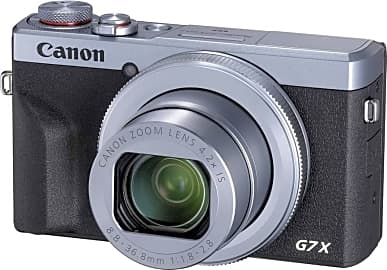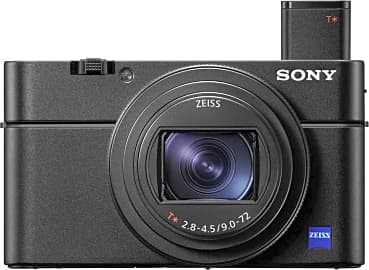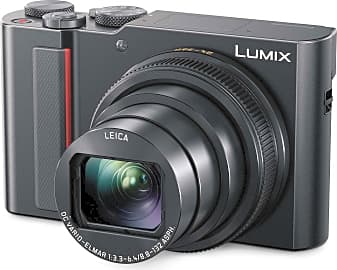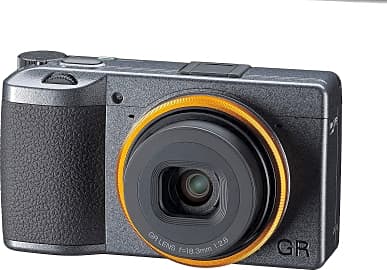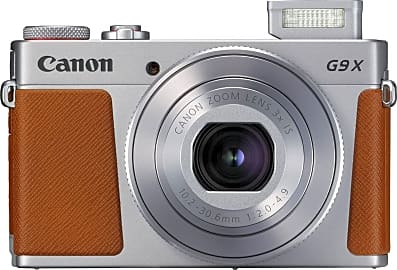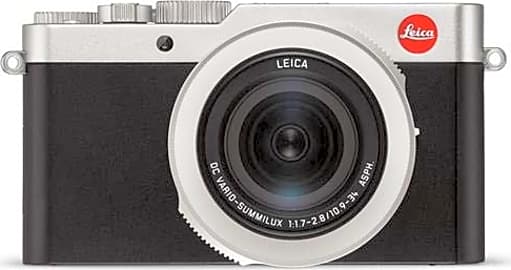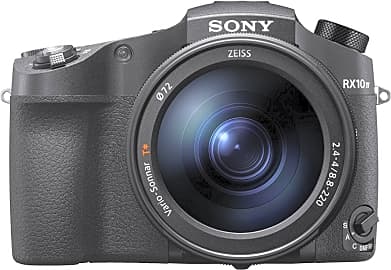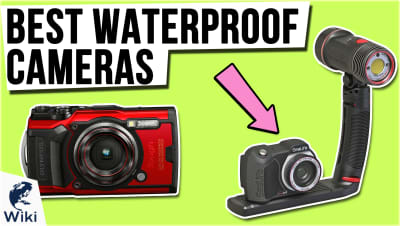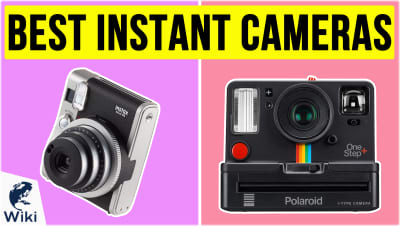The 10 Best Point And Shoot Cameras

This wiki has been updated 43 times since it was first published in May of 2015. If your photographic ambitions have graduated from selfies taken on your smartphone, but you are not quite ready for the cost or technical difficulty of an expensive interchangeable lens system, take a look at our selection of point and shoot cameras. They will help you capture images with stunning quality quickly and easily, by utilizing an array of high-tech features and intuitive controls. When users buy our independently chosen editorial selections, we may earn commissions to help fund the Wiki.
Editor's Notes
January 06, 2021:
As is often the case in these camera categories, it was a busy round of updates, one that saw half of our selections switched out for upgraded models from their respective companies. While most of these upgrades were relatively unexciting – the Ricoh GR III Street Edition, for example, is simply a restyled interpretation of the original GR III – some were a little more mentionable.
The Canon PowerShot G7 X Mark III can shoot continuously at a rate of 30 frames per second – compared to the Mark II’s eight frames per second – and the Sony RX100 VII separates itself from its predecessor with a microphone port and eye-tracking focus technology. But we felt that the most exciting development was with the Fujifilm X100V, which – for the first time in the X100 series – can be weather-sealed. Just note that you’ll require a separately purchased adapter to pull it off.
Our last new addition was the Olympus Tough TG-6, a rugged waterproof camera that came to replace the TG-5.
April 25, 2019:
Some of our favorite picks from last year's ranking have seen upgrades to their series, like the ever-capable Sony RX100 line, which recently dropped its sixth version, a camera with the ability to please such a majority of consumers that it was a no-brainer to elevate it to the top spot. Some older products have grown overdue for an upgrade, like the Canon ELPH, which was replaced on this list by a new compact option from Nikon, the A1000. This little guy has so much going for it — from a backside illuminated sensor to a litany of creative effects — that it easily slid into the middle of our ranking. Leica also has a new compact option out for anyone with a little extra money to burn. Its image quality is superb, of course, but there's no doubt that you pay a premium for the brand on this camera, keeping it out of the top three.
Ultimately, models like the Fuji X100F and others that include more comprehensive controls on-body come close to being more pro-sumer oriented than a device that could conceivably be considered a point-and-shoot. What saves them is their amazing image quality and the fact that they still include fully automatic modes for use by novices. Still, this is one of the reasons that the aforementioned Fuji slipped out of the top spot.
Yes, They're Better Than Your Cell Phone
That said, we're here to compare these cameras on the basis of the image quality they can provide.
I've been a photographer for a great while now, and I've shot professionally for the better part of the last five years. I can say, without a shadow of a doubt, that photographers love to turn their noses up at point and shoot cameras because most photographers believe that their gear will save them. They invest in tens, sometimes hundreds of thousands worth of gear in the hopes that the right combination will elevate their photography to new, unprecedented heights.
While the technical quality of an image is important, I'd say it's not actually the most important thing in a photograph. Image quality takes a back seat to things like lighting, composition, and, if we're talking about documenting our lives here, to nostalgia. That said, we're here to compare these cameras on the basis of the image quality they can provide.
Each of these is a fixed lens digital camera, meaning that the lens it comes with is the only lens you use. Many are zoom lenses, however, so with a simple push or pull of a small tab, the motorized lens elements reorganize themselves, allowing you to zoom in or out in an instant.
The sensors on these cameras range in size, but even the smallest among them is roughly twice the size of the sensor in your cell phone. And it's the combination of these two things–the lenses and the sensors–that make these cameras undeniably superior to your cell phone.
What's In Your Pocket?
It's an old photographer's adage: The best camera in the world is the one that you have on you. Those memories we spoke briefly about above, the moments in our lives that, when captured, elevate a picture above all considerations of image quality, require only that you have a camera to capture them.
With that in mind, the first thing you want to look for in your point and shoot camera is portability. After all, it's competing for carrying space with your cell phone, and even if it does take better pictures, you want to make sure you're willing to lug it around with you all over your vacations.
It's an old photographer's adage: The best camera in the world is the one that you have on you.
A few of these cameras are close in size to a DSLR with interchangeable lenses, the kind of system that can very quickly end up costing you thousands. These larger cameras will probably require their own bag, or require that you carry them around your neck as you tour a given city or event. Also, because of their size and professional appearance, some event coordinators won't let you into venues with them, for fear of such high quality images being pirated.
The advantages of these cameras, though, are their lenses and sensors. Onto a larger body, these manufacturers have mounted a much larger lens, which, due to its greater light collecting area, performs wonderfully in low light settings. The bigger sensor also translates into better low light performance and more dynamic range. If you don't mind the bulk, and you know you shoot a lot of low light photography, these might be the bodies for you.
If you want something a bit smaller and less complicated, however, there are a few very simple, very inexpensive little point and shoots on our list. These tend to fit pretty comfortably in a pants pocket, so you can sneak them in anywhere, and a couple of them have very powerful zooms built in. Be careful, though, as there are only a few among them that have a sensor and lens combination capable of taking professional-level photographs.
Smaller, Sharper, Faster, Stronger
Taking pictures has long been a complicated process, and incredibly intelligent people throughout history have applied their wits to the task of making photography easier. That camera attached to your telephone is a testament to that effort, but it also highlights a certain balancing act that's gone on since the first photographic images were ever captured. That is the balance between ease and quality.
The ease had been put in place, and then it was time for the quality to catch up.
When early photographers like Louis-Jaques-Mandé Daguerre and Henry Fox Talbot established their own unique development techniques, they did so in the name of discovering the easiest and most efficient way to create the best photograph. Over time, however, development by way of a photographic negative became the standard, and the size of that negative shrank down, allowing photographers reduced exposure times and much easier, more portable photography.
The digital age brought with it yet another increase in ease, but a significant decrease in quality. Where a 35mm negative could produce prints up to roughly 3x2 feet without much complaint about quality, early digital cameras could barely produce a simple 4x6-inch print with any degree of clarity. The ease had been put in place, and then it was time for the quality to catch up.
Photographic quality has always trickled down from the more expensive sectors of the market. Manufacturers test new methods out among the professionals who can afford the latest and greatest, and, as a result, that technology is usually very complicated and not very portable. Once certain quality elements like better glass for lenses and larger sensors get codified, the task for engineers is to fit the newer, better tech into smaller, easier-to-use packages. The result of those 175 years of development is the list of ten point and shoot cameras you see here.


